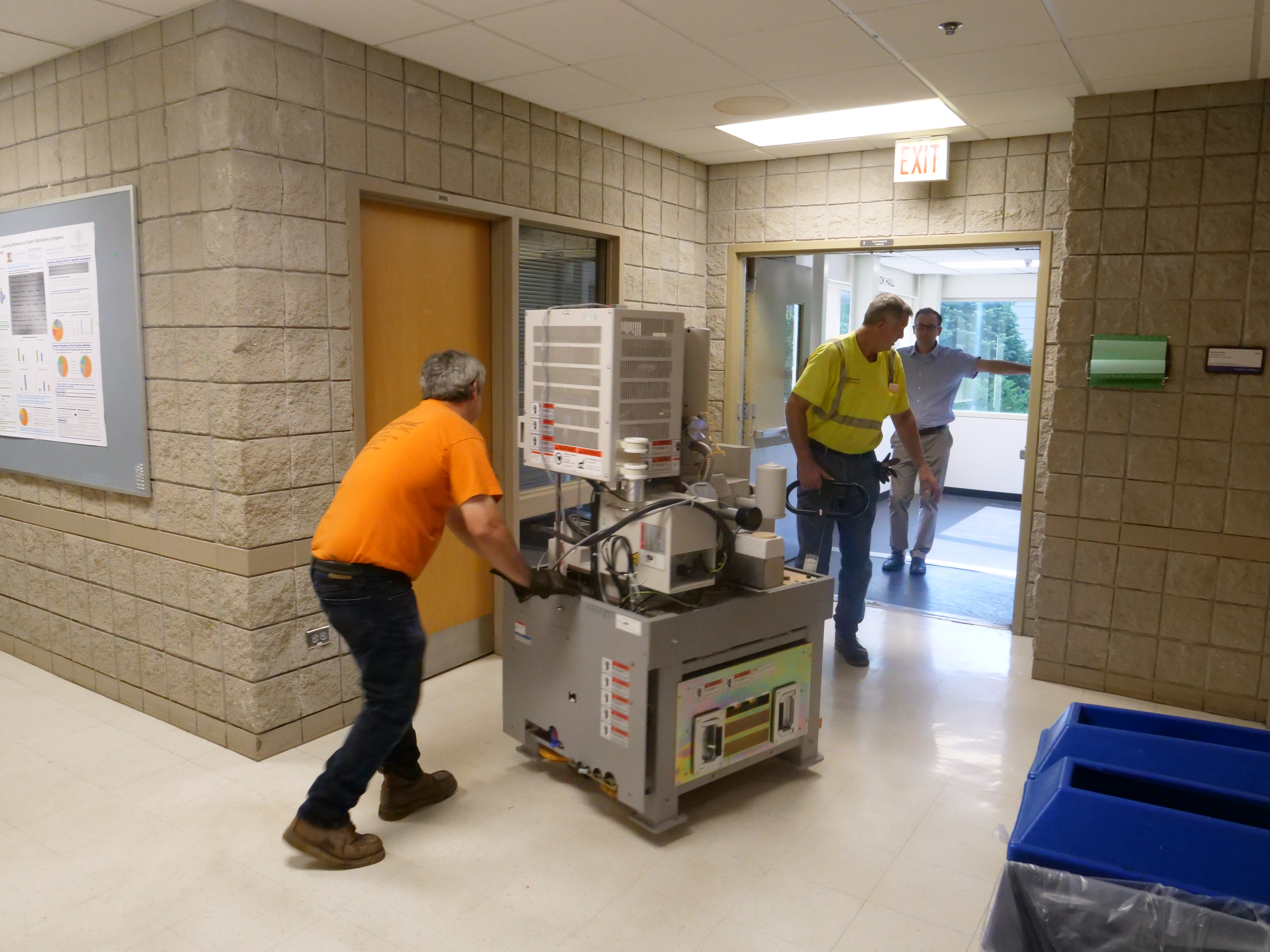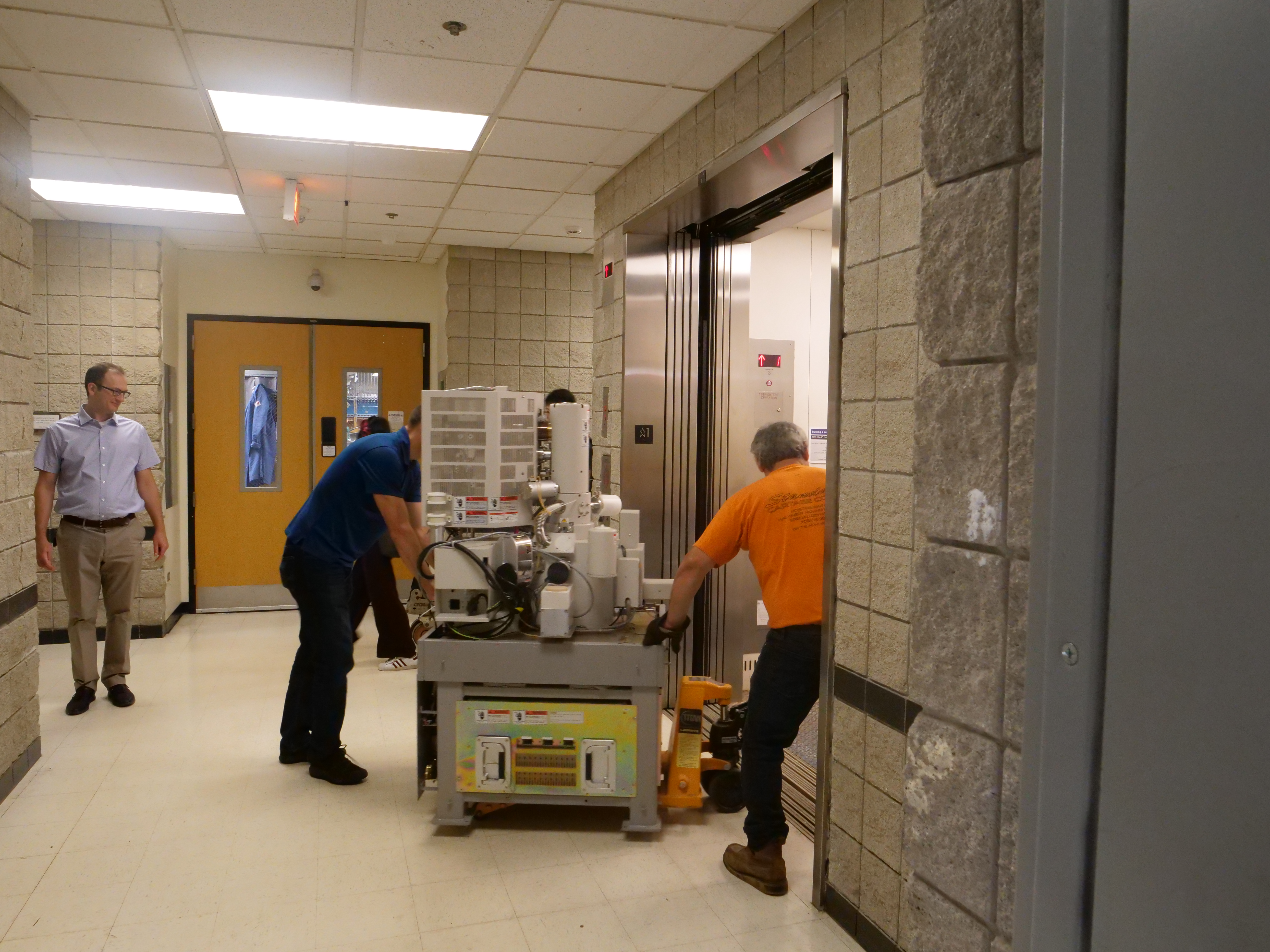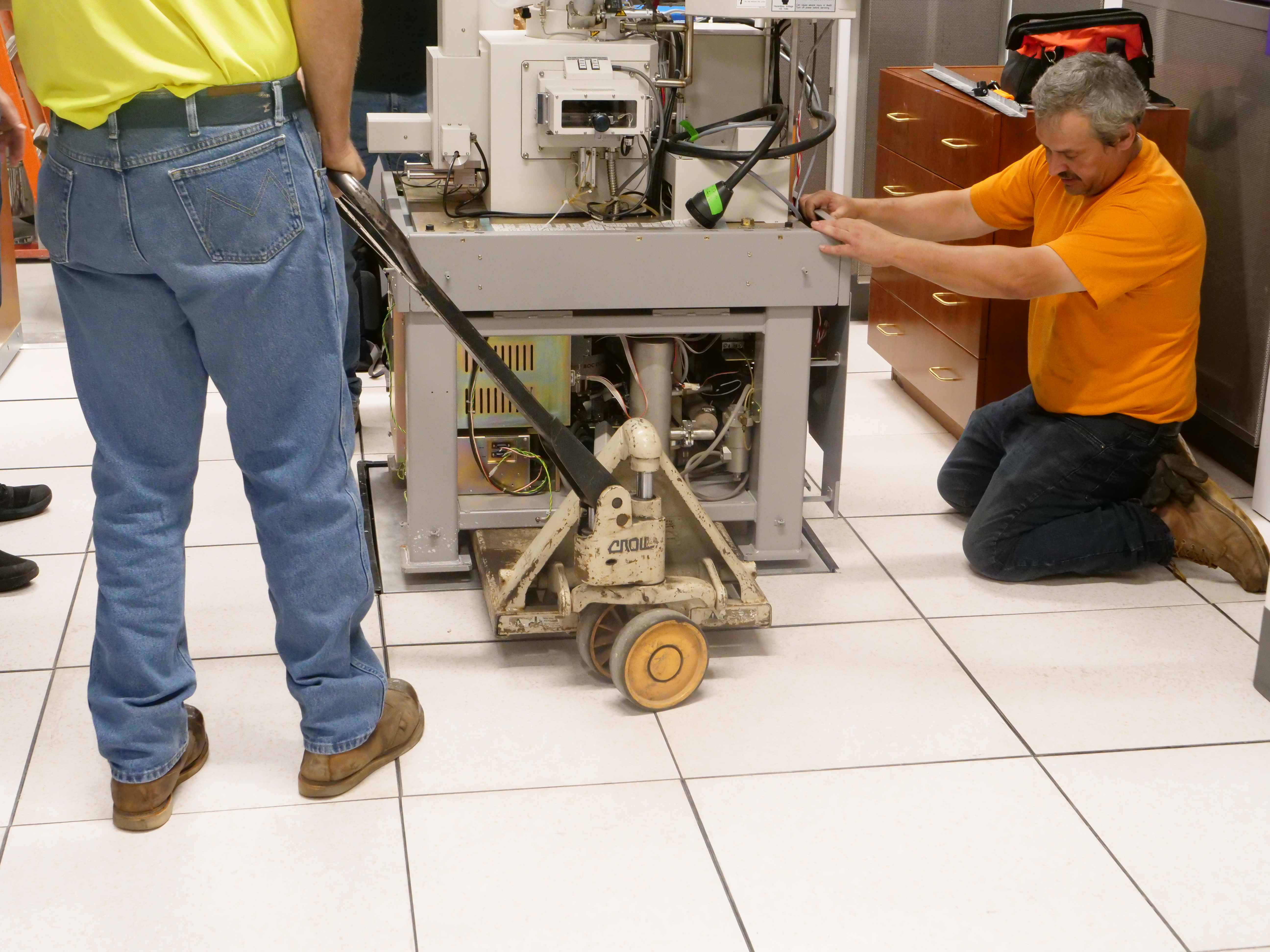How do you move an Electron Microscope?!
On July 22 we began a new phase of our gradual move into our new home in the Technological Institute.
The first instrument to be rehomed was the Hitachi S4800, which previously resided in our EPIC facility in Cook Hall. Our director, Vinayak Dravid, administrative staff and graduate students moved into the space in Tech and began setting up shop in early June.
Dr. Ben Myers, SHyNE director, explained that the first step for moving any piece of equipment is to prepare the space where it’s is going to live.
“Any sort of electron microscope requires a few things: You have to have power of the right variety; you have to have cooling water, typically, for the microscope. You have to have, often, compressed air and nitrogen gas,” he said. “And then the environment has to be kind of manicured.”
The degree to which the environment needs to be tailored depends on the microscope. The factors that usually need to be controlled for are mechanical vibration, electromagnetic interference and the room’s acoustics, temperature, humidity and even airflow.
“In this case it was a brand new space so we were able to design all that stuff from the ground up, which is better and worse,” Myers said. “It’s better that you’re getting exactly what you think you want, but it’s unproven, too. None of those systems have been tested. There’s a little bit of anxiety about whether all of those things are going to work properly.”
The Hitachi S4800 was powered down and disconnected on Monday. The cables and accessory equipment were bundled up and then a rigging company hired to assist with the move came Tuesday to get the machine into the new space. Since the Hitachi S4800 is smaller, the team was able to use simpler equipment like a pallet jack to roll the microscope from one building to another.

“We just put the parts on wheels, essentially, and then rolled it across two buildings,” Myers said.
As students, faculty, staff and users who have traversed the tunnels to move between our different facilities know, that journey wasn’t as straightforward as it may seem: It took four elevator trips, a ramp and some traversing of Tech’s labyrinth-like hallways to reach NUANCE’s new home in the AB wing.

The process will be more challenging for larger pieces of equipment.
“The biggest difference between that microscope and a bigger microscope like a TEM is that we can move that microscope all in one piece,” Myers said.
The larger microscopes can be 13-14 ft. tall, almost twice the size of a standard door frame, which means they have to be broken into segments and the vacuum in its column gets broken, which requires additional time to recover.
The Hitachi S4800 remained under vacuum throughout the duration of its move, so essentially it just had to be plugged in at the new space to be brought back online.

“We actually had it powered up and with a beam on Tuesday, the same day we moved it,” Myers said. “The TEM will probably take at least two weeks to break down and get it ready to move and then another month to get it reassembled and get it back up — and that assumes that everything works properly. It’s a much more complicated process.”
The fact that the new rooms were designed with tighter specifications could add some time to the process since it will take more fine-tuning to get the microscope to meet those standards. NUANCE staff continue to test the Hitachi S4800 to ensure that the instrument and its environment are properly tuned.
The larger TEM microscopes are slated to begin moving to Tech in November.
